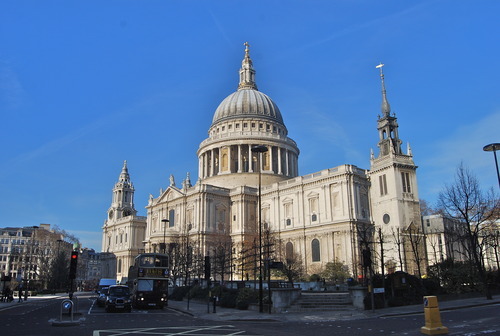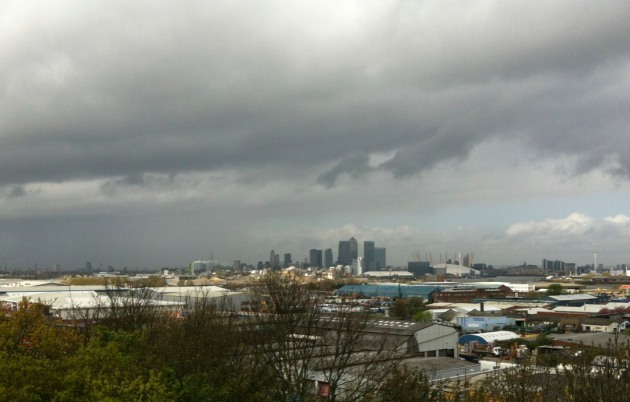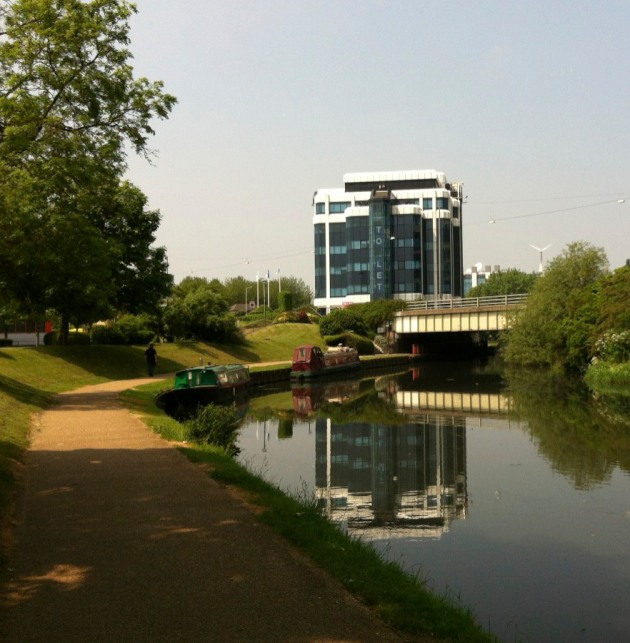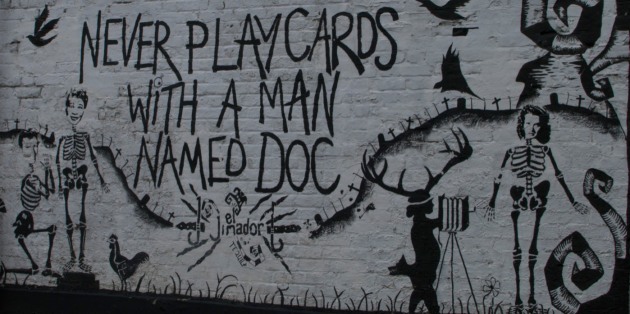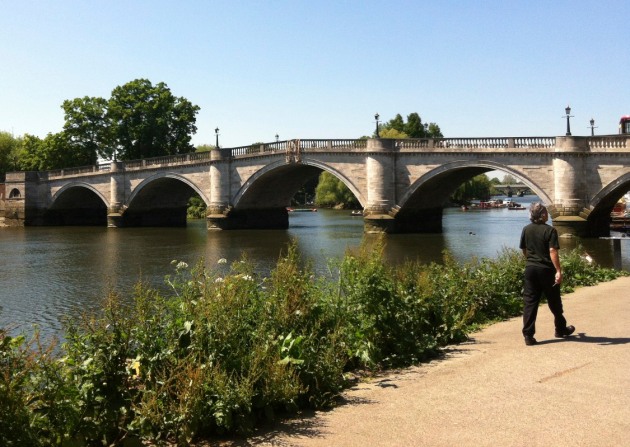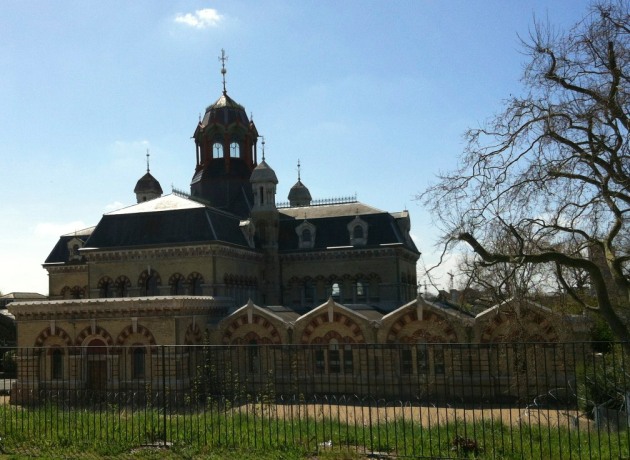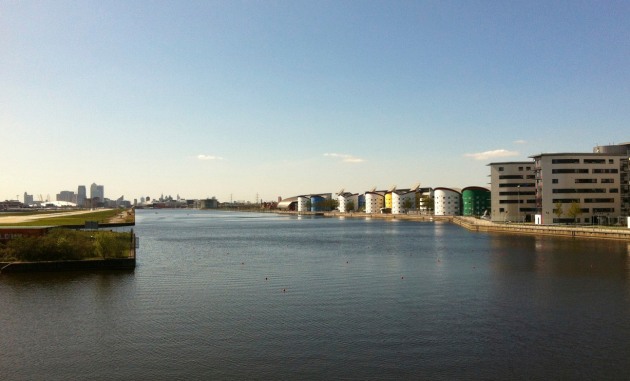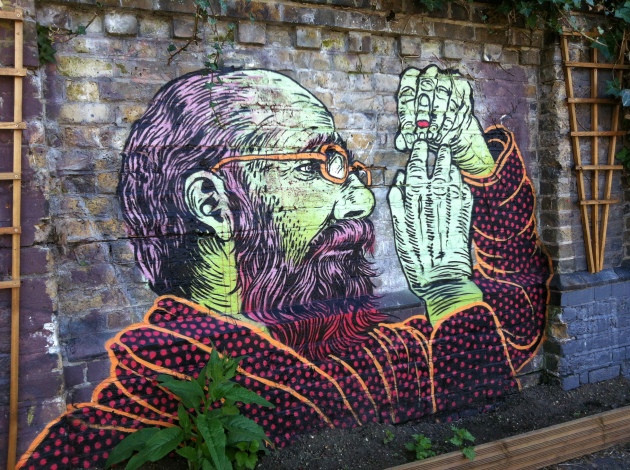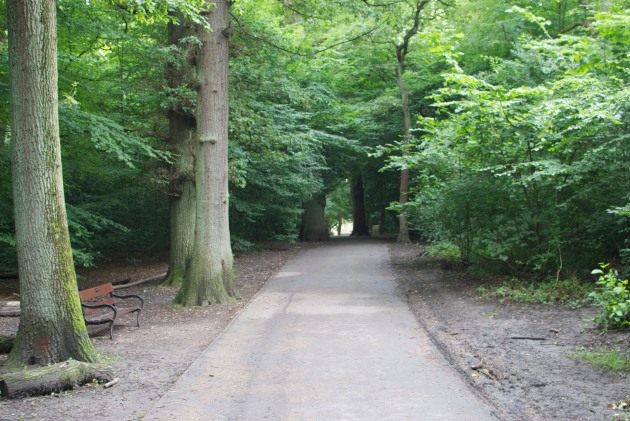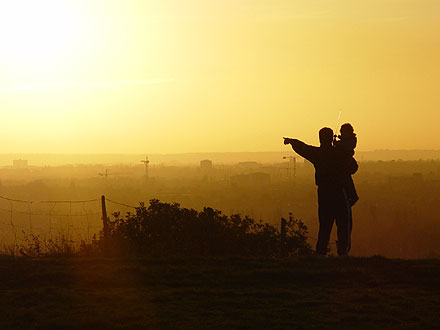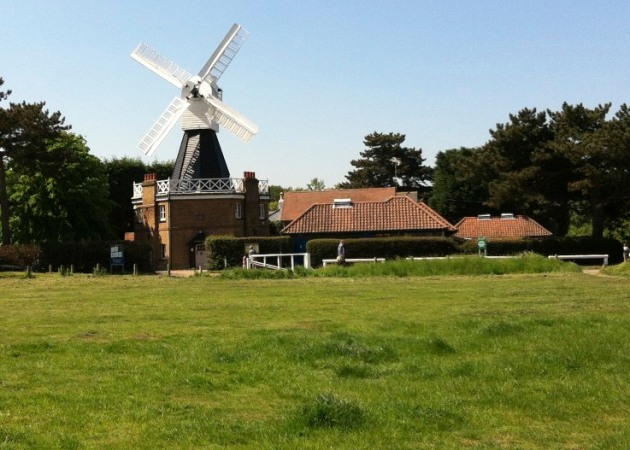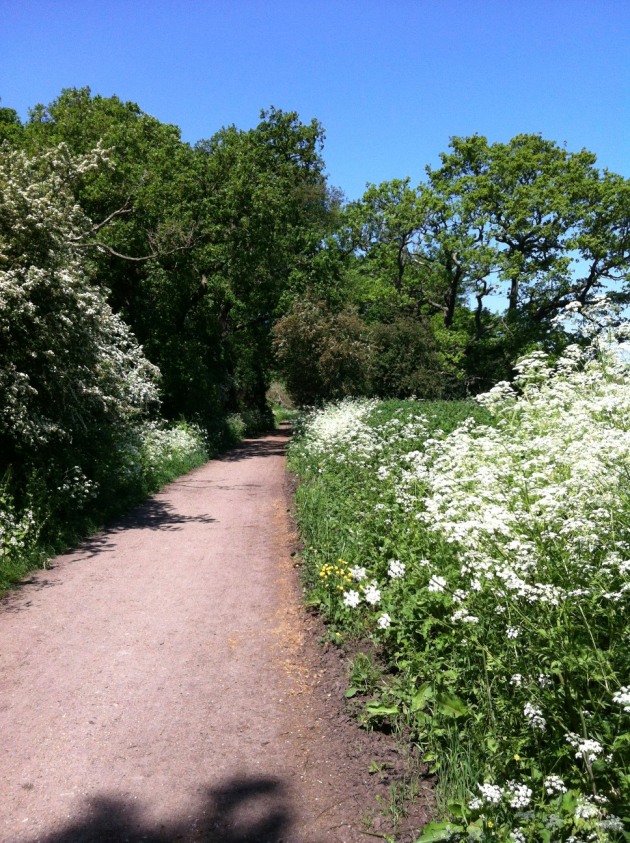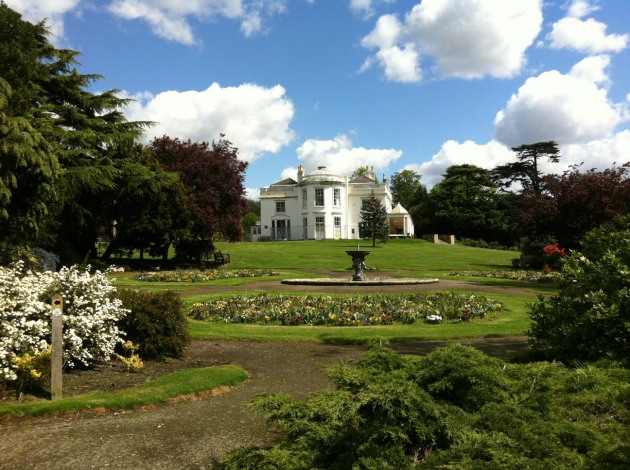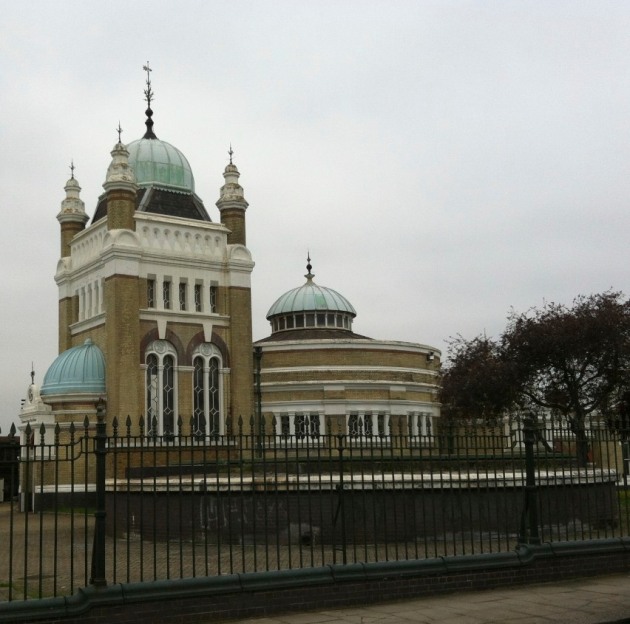

This walk begins from Blackfriars station on the north bank of the Thames. Once you leave the station head under the rail bridge and up Queen Victoria Street on the right hand side of the road. Cross at the traffic lights towards the small cafe which always has a shiny table outside it and is the haunt of any number of construction workers or cab drivers. The starting point is next to the cafe.
St Andrew by the Wardrobe is a church I very much like. Firstly, it is the closest City church to my house and I have walked past it so many times and ,secondly, it has a highly unusual name which draws your attention to it immediately. For visitors it is near by Blackfriars Station, close to the Thames and a very good starting point for a walk.
A church was first recorded on this site c.1170 but the church was destroyed in the Great Fire of 1666. It was re-built by Wren during the re-construction period (1685-94) and was both ‘Wren’s cheapest and last parish church.’
”Wardrobe’ refers to the church’s location beside the King’s Great Wardrobe, where royal costumes and belongings were kept from 1361 until being moved after the Great Fire.’
Leaving St Andrew’s by the Wardrobe you cross the road and past the entrance to an underground car park. Once you see the sign for the subway walk down the steps to arrive at the door of the picturesque St Benet Paul’s Wharf church. Imagine if you can that this church would have been on the foreshore of the River Thames two to three hundred years ago , busy with boats unloading materials for the rebuilding of St Paul’s and lightermen waiting to take you across to the south bank and the Bishop’s brothels of Southwark.
St Benet Paul’s Wharf is a beautiful church as my image attests (click all photos or maps to enlarge them)  and in very good shape since Wren’s rebuilding but isolated between diabolic traffic schemes that have torn the heart of the area. Surprisingly, it is also know as the ‘Welsh Church’ and still holds its services in the Welsh language. It was re-built in ‘the Dutch style, although there is evidence that the design was principally by Wren’s assistant Robert Hooke.’
and in very good shape since Wren’s rebuilding but isolated between diabolic traffic schemes that have torn the heart of the area. Surprisingly, it is also know as the ‘Welsh Church’ and still holds its services in the Welsh language. It was re-built in ‘the Dutch style, although there is evidence that the design was principally by Wren’s assistant Robert Hooke.’
There are two ways to the next church but I’ll presume you want to travel by the pretty route. Double back up the stairs to Queen Victoria St turning right and walk up the hill. As you approach the traffic lights a crowd of people will be queuing or crossing on either side of the road. This is the route to the Millennium Bridge driving tourists from the Tate Modern Gallery on the south bank and delivering them to St Paul’s Cathedral on your left. Walk through the crowd and keep on until you pass a silver building of metal and glass (like so many in London) and turn right down Lambeth Hill. Once you reach the bottom of the hill and look to your left you will see a wonderful church ahead and hear the cacophony of hundreds of vehicles over your right shoulder. Such a dispiriting sight.
 St James Garlickhythe is a sea-faring church with connections to the London garlic trade. The sight of the church was on a major wharf which was the centre of the garlic trade and the city’s links to Spain.If you look above the entrance you will see a scallop shell which is the symbol of St James and is found in the churches of Santiago de Compostela on the Galician coast in north west Spain. Imagine the smells of the boats, traders and streets surrounding the wharves! Also, from this location you may get a sense of the small, narrow London streets which somehow have survived two world wars and bombings and yet still survive. Look down Skinner St and up Garlick Hill to Queen Victoria St and it is easy to imagine just how different London looked in its Restoration pomp.You will have to exclude the numerous building sites that have sprouted upwards in the City like sores on a London plague victim.
St James Garlickhythe is a sea-faring church with connections to the London garlic trade. The sight of the church was on a major wharf which was the centre of the garlic trade and the city’s links to Spain.If you look above the entrance you will see a scallop shell which is the symbol of St James and is found in the churches of Santiago de Compostela on the Galician coast in north west Spain. Imagine the smells of the boats, traders and streets surrounding the wharves! Also, from this location you may get a sense of the small, narrow London streets which somehow have survived two world wars and bombings and yet still survive. Look down Skinner St and up Garlick Hill to Queen Victoria St and it is easy to imagine just how different London looked in its Restoration pomp.You will have to exclude the numerous building sites that have sprouted upwards in the City like sores on a London plague victim.
After St James’ walk forward down Skinner St until you emerge next to St Michael Paternoster Royal on your left hand side. Sit on the wall of the park and observe the towering beauty of this church which was re-built by the four-time Lord mayor of London, Richard ‘Dick’ Whittington in the early 15th century. He lived close by in College Hill and paid for the restoration work before Wren re-built it.
 ‘St Michael’s is currently a Guild Church and serves as the headquarters for The Mission to Seafarers. The Mission assists over three hundred chaplains working in ports around the world.’
‘St Michael’s is currently a Guild Church and serves as the headquarters for The Mission to Seafarers. The Mission assists over three hundred chaplains working in ports around the world.’
The evidence of Guilds and their buildings are all around this part of the City. Many people walk past these buildings each day without a second thought but if you look carefully at both ground level and upwards to the spires and the church roofs there is a wealth of architecture which has survived the wreckers of the City and its numerous building trends. After St Michael’s continue along the road to the end, turn left and walk up the incline before turning right next to Cannon Street and the station. Continue along and cross the street before turning left into Abchurch Lane.
As soon as you turn into the lane you see the church fronted by a largish square. Sitting before you are the numerous City-types earnestly engaged in conversation on their mobiles or with others and drinking coffee whilst trying to convince you that this is part of their job. There is now a mobile cafe against the church wall which appears to be semi-permanent.
The church of St Mary Abchurch is yet another church which was re-built by Wren after the Great Fire but damaged during the Blitz of World War II and was restored by Godfrey Allen between 1945-57. This, however, is one church you need to visit during opening hours just to appreciate the magnificence of its interior which a single photograph could never do it justice. The cupola is so beautifully painted that I had to sit down to appreciate its beauty. I was as speechless as I was the very first time I set eyes upon the ceiling of the Banqueting House in Whitehall. It is that impressive. I’ll let Wiki describe it for you:
 ‘The dome springs from four plain brick walls, has no external thrusts and measures over forty feet across. It was not painted until 1708 when the whole church went under repair and beautification.William Snow painted the dome’s interior depicting worship in heaven, William Grey made the pulpit, and the door cases, a font cover, rails and Royal Arms are by William Emmett. Its grand altar-piece is by Grinling Gibbons.
‘The dome springs from four plain brick walls, has no external thrusts and measures over forty feet across. It was not painted until 1708 when the whole church went under repair and beautification.William Snow painted the dome’s interior depicting worship in heaven, William Grey made the pulpit, and the door cases, a font cover, rails and Royal Arms are by William Emmett. Its grand altar-piece is by Grinling Gibbons.
His original bill for what he called the ‘Olter Pees’ was discovered as recently as 1946 in the Guildhall Library. The gilded ‘Pelican in her piety’ makes its appearance both on the reredos and in the original copper weather vane made by Robert Bird, which was relocated to sit over the north door after being removed from the spire for health and safety reasons.’
‘… it is often said to be one of the least altered of Wren’s churches and employed the skills of some of his finest craftsmen. It is certainly one of the most original churches, particularly the beautiful dome not hinted at from the outside … The dome was built during Wren’s experimental period, later perfected in the much larger version of St Paul’s.’ LCC
Upon leaving this church sweep left and continue up Abchurch Lane crossing King William St where the lane continues. Once you reach Lombard St turn left until the end of the road and on your left is the rather imposing church of St Mary Woolnoth.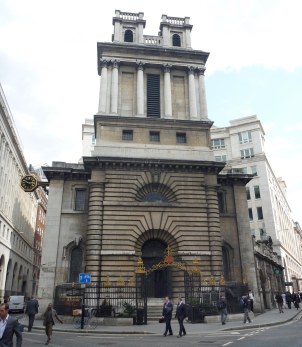
St Mary Woolnoth sits astride a highly visible and very prominent site at the junction of Lombard St and King William St and outside one of the many Bank tube station entrances.It is a wonderfully imposing church which is Saxon in its origins. It was rebuilt in the 15th century, like so many other places of worship in the City, then damaged in the Great Fire before being restored by Wren and later rebuilt by a pupil of his, Nicholas Hawksmoor, in the 18th century. For those of you who are unfamiliar with Hawksmoor there is this description on his Wikipedia page ‘After the death of Wren in 1723, Hawksmoor was appointed Surveyor to Westminster Abbey. This post received 100 pounds voted by Parliament for the repair and completion of the Abbey in 1698. The west towers of the Abbey were designed by Hawksmoor but was not completed until after his death.’
St Mary Woolnoth is ‘notable for being the only remaining complete City church by Wren’s gifted assistant, Nicholas Hawksmoor. It is also the only City church to have survived the Second World War unscathed.’ This church was one of the ‘fifty new churches’ called for by Queen Anne and built between 1716-27 when Hawksmoor rebuilt it. It is a hugely imposing church which towers over such a small space and has such stature that it was said to be the ‘equal to anything being built at the time in Europe.’
If you are a student of the Abolitionist Movement you may be familiar with the name of John Newton who was the rector at St Mary’s from 1779-1807. Newton was one of the few Evangelical ministers in the City and with William Cowper, the poet, co-wrote the hymn ‘Amazing Grace’. Newton , during this period, also became a friend of the MP, William Wilberforce, and began to preach against the Slave Trade from the very same pulpit which survives to this day.
The church can claim one further boast as it is referred to in T S Elliot’s epic poem, The Waste Land, in which Elliot bemoans the fate of many a commuter as he made his way from London Bridge to his place of work at Lloyds Bank in nearby Lombard Street.
Under the brown fog of a winter dawn, A crowd flowed over London Bridge, so many, I had not thought death had undone so many. Sighs, short and infrequent, were exhaled, And each man fixed his eyes before his feet. Flowed up the hill and down King William Street, To where St Mary Woolnoth kept the hours With a dead sound on the final stroke of nine.
Elliot’s verse is a very good point on which to leave this walk and to start the second part once the walker has had the time to appreciate his or her surroundings. I am very taken by the old banking signs that still adorn the buildings on Lombard Street which was the centre of banking and coffee house culture in London for centuries. Photograph them, they are unique!








